Cape York
Shutterstock
Part of the 1606: Contact at Cape Keerweer Education Resource from the Australian National Maritime Museum
The Yolgnu people are Aboriginal people from north-eastern Arnhem land in the Northern Territory.
Before travellers from Europe mapped these waters, trade was common between people from this area and fishermen from Asia. Each year the Makassans sailed from Makassar in Indonesia to Yolgnu Country to catch and trade trepang (sea cucumbers). The trepang were cooked in sea water, then dried or smoked, before being transported and sold as a popular food and medicine in China. The Makassans also traded other useful materials to the Yolgnu such as metal and cloth.
The Makassans had an influence on Yolgnu culture. The Yolgnu people made song lines about their visits, introduced Makassan words into their language, and there is evidence of cross-cultural marriages.
The Australian government forced the cultural exchange between the Yolgnu and Makassans to end in 1901 when it introduced the Immigration Restriction Act of 1901. The last Makassan traders visited Yolgnu shores in 1907.
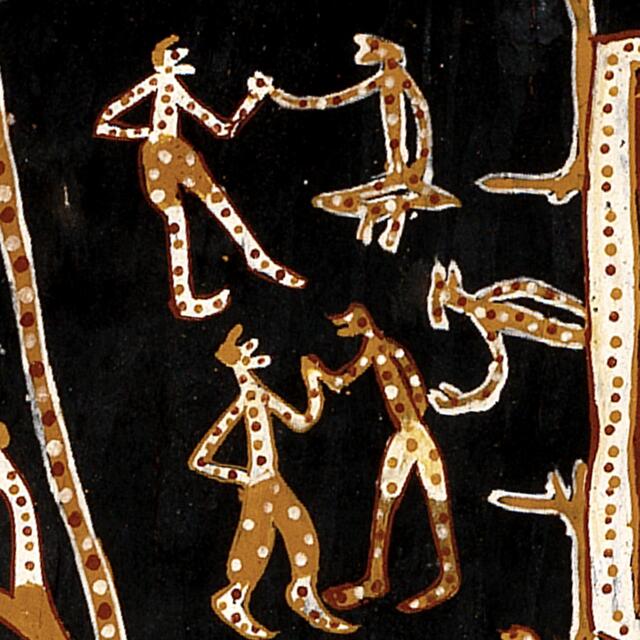
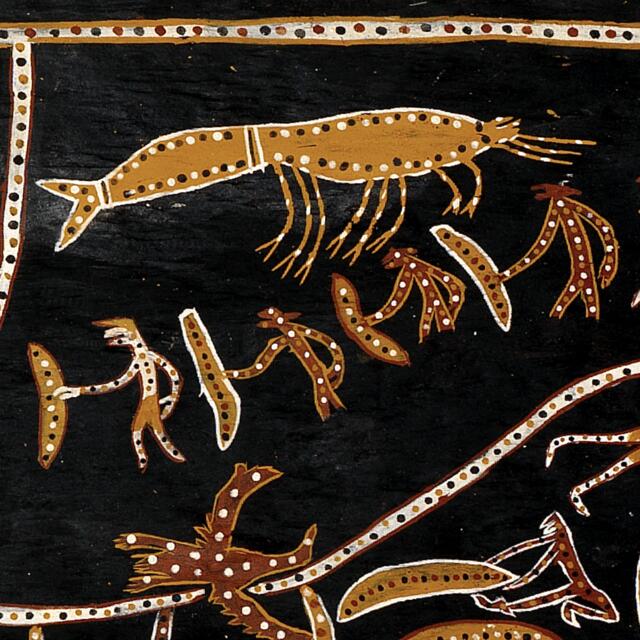
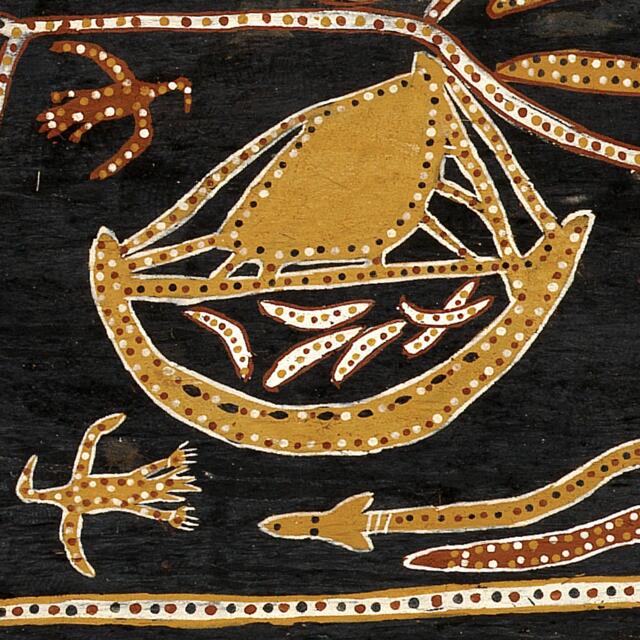
Activity
- Have a look at the Map of Indigenous Australia on the Australian Institute of Aboriginal and Torres Strait Islander Studies website. Find the land of the Yolgnu people, in what we now call the Northen Territory. Makassan traders visited many different groups of people in this part of Australia.
Map of Indigenous Australia | AIATSIS
- Now look at a map of the word in your classroom or on the internet. Find the country Indonesia, where the Makassans lived, and trace where they sailed to trade with people along the north coast of Australia and then up to China.
This artwork, The Makassans - the Muldi, was painted by Wainburranga (Paddy Fordham), a Rembarrnga man from the Northen Territory. It tells the story of the trepang trade, a story that has been passed down for many generations.
In this work he used coloured ochres to paint the story on bark, diving the image into 12 chapters so that that non Rembarrnga viewers can understand what is happening.
Activity
As a class, look closer at The Makassans - the Muldi by Wainburranga (Paddy Fordham) on the museum's collection website.
The Makassans - The Muldi | The Collection | Australian National Maritime Museum
Can you find:
- Rembarrnga and Makassan people meeting and exchanging goods.
- People collecting and prepare the trepang
- Makassan boats (perahu) full of trepang
The lobster in the artwork symbolises the abundance of food in the area. What other animals can you see?
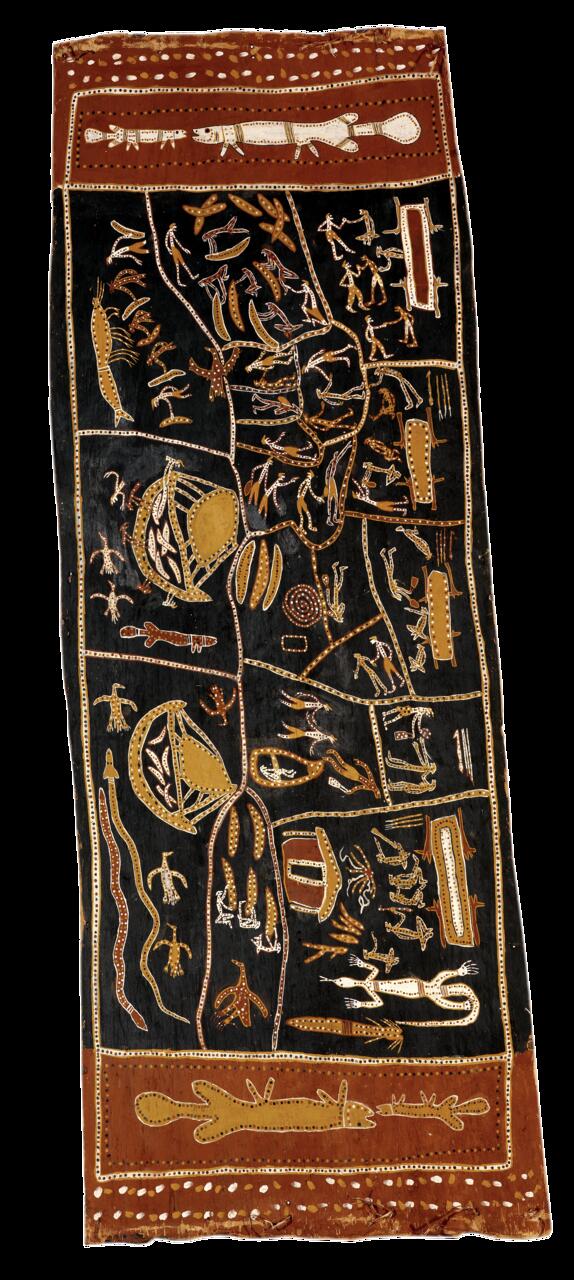
The Makassans - The Muldi.
Paddy Wainburranga Fordham. Licenced by Copyright Agency, 2021 for use by the Museum.
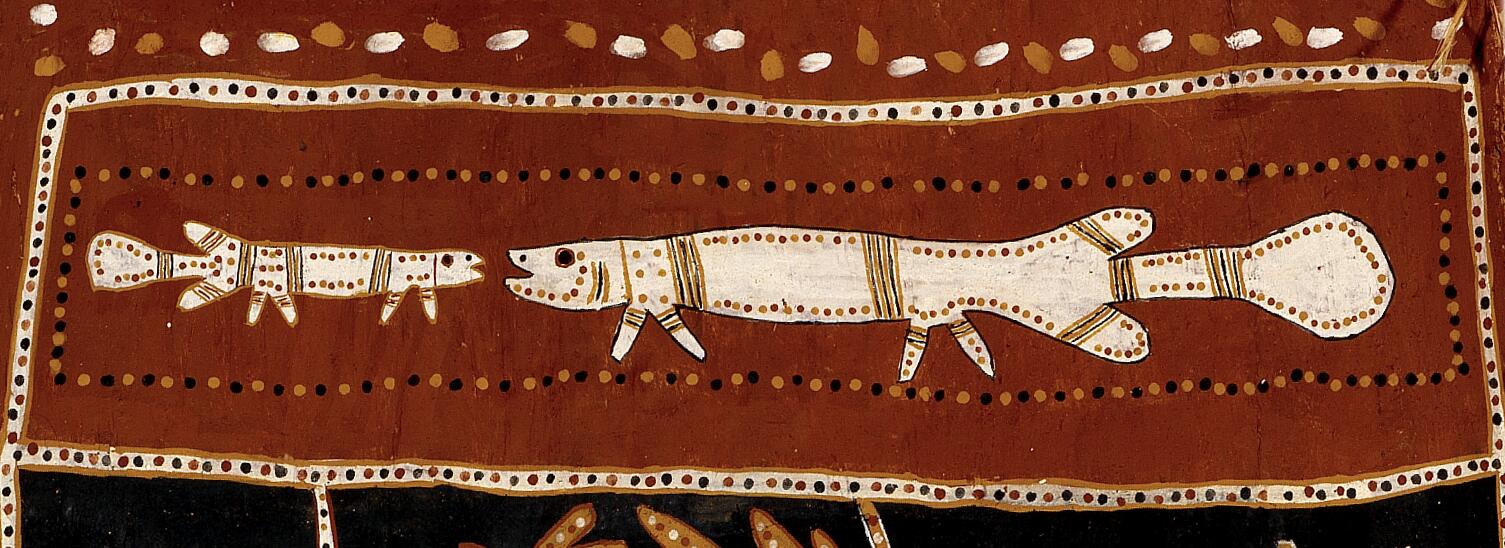
Detail from The Makassans - The Muldi.
Paddy Wainburranga Fordham. Licenced by Copyright Agency, 2021 for use by the Museum.
Extension Activity
This artwork, painted in 1991, is a modern representation of a story that has been passed down for generations. Makassan perahu also appear in rock art in Arnhem Land, near where this trade occurred.
Think about a story that has been passed down to you; it could be something from your family, a story from history, or a story you were told as a child (like a fairy tale). Create a storyboard of how you could tell this story using a series of images, like Wainburranga did in this artwork.